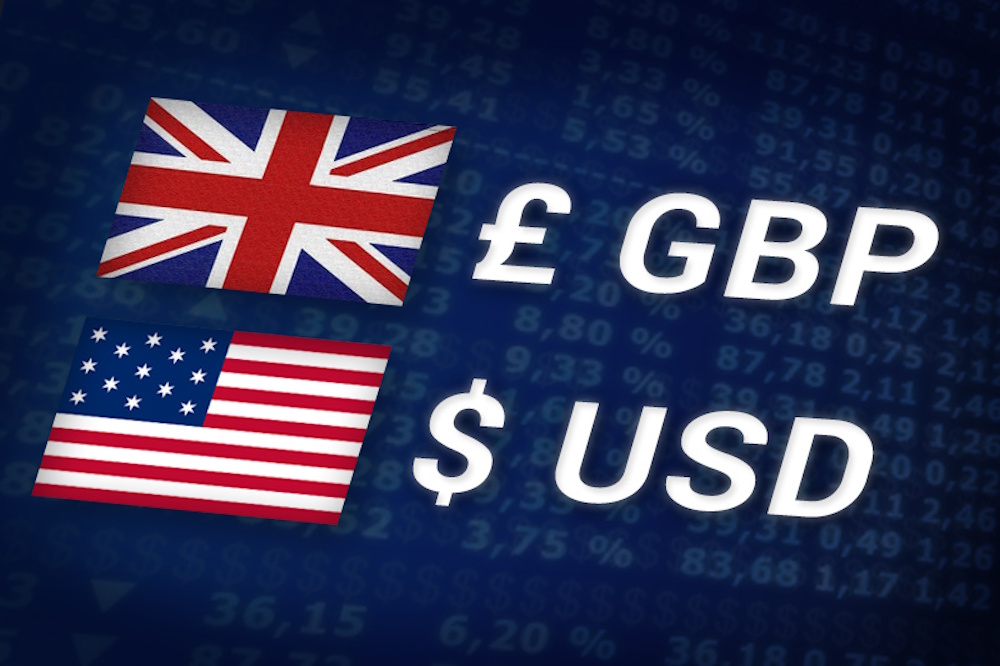The GBP/USD experienced a significant increase this week, trading around 1.3440–1.3460, marking its highest level in over two months. This rise was bolstered by a blend of weaker U.S. dollar trends and a slight enhancement in UK macroeconomic data. The recovery came after the currency’s earlier decline to 1.3245, indicating a rebound of nearly 200 pips within days as traders adjusted their positions in response to a weakening dollar and increasing expectations for Federal Reserve rate cuts. The action highlights the extent to which changes in U.S. monetary policy remain a key influence on the short-term trajectory for Cable, despite the presence of weak growth indicators within the UK economy. The overarching market narrative is centered around a declining dollar index DXY, which has dropped to 98.60. This movement indicates increasing investor belief that the Federal Reserve will implement two rate cuts before the end of the year.
The economic data emerging from the United Kingdom presents a cautiously optimistic outlook. The Office for National Statistics reports that UK GDP experienced a growth of 0.1% in August, which is consistent with consensus forecasts; however, this is counterbalanced by a downward revision of July’s figure to –0.1%. Industrial production increased by 0.4%, reversing the previous month’s decline, while manufacturing output surged by 0.7%, exceeding expectations of 0.2%. However, not all figures were favorable — construction output decreased by 0.3%, and the goods trade deficit expanded to £21.2 billion, indicating a persistent reliance on imports. Despite these imbalances, the data confirmed the economy’s capacity to sustain modest forward momentum in the context of elevated rates. Analysts perceive this stability as a short-term buffer for the pound, especially as the Bank of England encounters mounting pressure to shift towards a more accommodative policy in the upcoming quarters. The UK labor market exhibited signs of deterioration, as the unemployment rate rose to 4.8% and jobless claims increased by 25,800 in September. The growth in average earnings has decelerated to 4.7%, marking the slowest rate since the beginning of 2022, whereas total compensation, inclusive of bonuses, increased by 5.0%. The deceleration in wage inflation provides the Bank of England with the opportunity to relax policy without exacerbating additional price pressures.
Current market expectations indicate an 80% likelihood of a 25-basis-point reduction by December, with an additional cut anticipated in February 2026. This dovish expectation has limited sterling’s potential for appreciation despite short-term optimism. As inflation continues to cool and consumer spending stays subdued, the central bank is likely to adopt a more accommodative stance. The U.S. dollar is currently experiencing considerable pressure, which is contributing to the appreciation of the GBP/USD pair. The current U.S. government shutdown, which has now extended into its third week, has intensified investor concerns regarding fiscal stability. Currently, the report indicates a 96.7% likelihood of a 25-basis-point reduction in the Fed rate this October, with an additional adjustment anticipated in December. The dovish trajectory has caused the Dollar Index to decline to 98.58, marking its lowest point in a week, as yields on U.S. Treasuries have softened. Renewed U.S.-China trade tensions, characterized by Washington’s proposed technology export restrictions and Beijing’s reciprocal tariff threats, have further dampened global demand for the dollar. With a measured return of risk appetite in the markets, currencies that are higher-yielding and sensitive to growth, such as the pound, have seen positive outcomes.
GBP/USD has technically broken decisively above its descending trendline, indicating a shift in market sentiment. The pair is currently trading around 1.3435, well above its 20-day EMA at 1.3410 and 50-day EMA at 1.3376, both of which are showing an upward trend. The 200-day EMA, positioned at approximately 1.3480, represents the subsequent significant resistance level. If bulls manage to achieve a daily close above this threshold, the subsequent upside targets are 1.3550 and 1.3600, aligning with the swing highs from August. The Relative Strength Index is currently at 68, approaching overbought levels, indicating a potential short-term pause or slight pullback toward the range of 1.3375–1.3345 prior to any additional upward movement. The ongoing pattern of higher highs and higher lows reinforces a confirmed bullish sentiment. Provided the pair holds support above 1.3410, the momentum suggests a likelihood of further appreciation towards the 1.3500–1.3550 range. The macroeconomic environment remains supportive of the pound. The ongoing dovish Fed pricing, alongside a strengthening risk sentiment in global equities, has fostered conditions favorable for additional GBP appreciation. In contrast, Europe’s political stability highlights the increasing gridlock in Washington, which continues to diminish the attractiveness of the dollar. Despite the ongoing structural risk posed by trade tensions between the U.S. and China, there has been a noticeable shift among traders toward identifying opportunities in undervalued currencies. This rotation has bolstered both EUR/USD and GBP/USD, with the latter experiencing a more pronounced advantage from the market’s shift away from the greenback.

